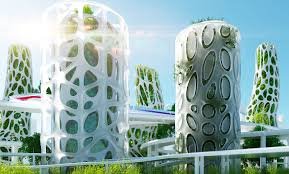In an era defined by environmental urgency, the pursuit of sustainable practices and technologies has become paramount. As the global community grapples with climate change, resource depletion, and pollution, the call to “embrace what may be the most important green technology ever” resonates deeply. This isn't about a single invention, but a comprehensive shift towards intelligent and integrated solutions that fundamentally alter our relationship with the planet.
What is Sustainability?
Sustainability, at its core, is about meeting the needs of the present without compromising the ability of future generations to meet their own needs. It's a multifaceted concept encompassing environmental, social, and economic dimensions. Environmentally, it means preserving natural resources, reducing pollution, and protecting biodiversity. Socially, it involves ensuring equity, human well-being, and community vitality. Economically, it focuses on fostering resilient and inclusive economies that operate within planetary boundaries. In essence, sustainability aims for a harmonious balance, ensuring a healthy planet and thriving societies for generations to come.

The Most Important Green Technology Ever: A Holistic View
While it's tempting to point to a single breakthrough, the “most important green technology ever” is arguably not one invention, but the integration and intelligent application of a suite of technologies, with renewable energy at its heart, amplified by artificial intelligence and circular economy principles. It's a systemic transformation rather than a singular silver bullet.
This holistic green technology encompasses:
Advanced Renewable Energy Systems: Solar, wind, geothermal, hydroelectric, and emerging technologies like wave and tidal power.
1. Energy Storage Solutions
Crucial for grid stability and integrating intermittent renewables, including advanced battery technologies (e.g., solid-state batteries) and long-duration storage.
2. Smart Grids
Utilizing AI and IoT to optimize energy distribution, reduce waste, and seamlessly integrate diverse energy sources.

3. Sustainable Agriculture
Precision farming, vertical farming, and practices that minimize water use, chemical inputs, and land degradation.
4. Circular Economy Technologies
Innovations in recycling, waste-to-energy, and designing products for durability and reuse, moving away from a linear “take-make-dispose” model.
5. Carbon Capture, Utilization, and Storage (CCUS)
Technologies to remove carbon dioxide from the atmosphere or industrial emissions.
6. Green Building and Infrastructure
Energy-efficient designs, sustainable materials, and smart building management systems.
7. Green Transportation
Electric vehicles, hydrogen-powered transport, and optimized logistics.
These technologies, when combined and optimized, form a powerful arsenal against environmental degradation.
Renewable Energy Benefits: The Foundation of a Green Technology
Renewable energy sources are the cornerstone of this green revolution, offering a myriad of benefits:
- Environmental Protection
- Energy Independence and Security
- Economic Growth and Job Creation
- Cost Reduction
- Resource Conservation
1. Environmental Protection
They produce no greenhouse gas emissions or air pollutants during operation, directly mitigating climate change and improving air quality.
2. Energy Independence and Security
By diversifying energy supply and reducing reliance on volatile fossil fuel markets, nations can enhance their energy security and reduce geopolitical risks.
3. Economic Growth and Job Creation
The rapidly expanding renewable energy sector creates millions of jobs in manufacturing, installation, research, and maintenance.

4. Cost Reduction
The cost of renewable energy, particularly solar and wind, has plummeted in recent years, making them the cheapest power option in many parts of the world. This trend is expected to continue, making clean energy increasingly competitive.
5. Resource Conservation
Unlike finite fossil fuels, renewable sources like sunlight and wind are inexhaustible, ensuring a sustainable energy supply for future generations.
Latest Green Technology Updates (As of mid-2025)
The pace of innovation in green technology is relentless. Key developments include:
- AI-powered Energy Efficiency
- Advanced Solar PV
- Grid-Scale Energy Storage
- Green Hydrogen
- Sustainable Construction
1. AI-powered Energy Efficiency
AI and machine learning are increasingly integrated into smart grids, energy-efficient buildings, and energy management systems. These technologies optimize energy consumption, predict demand, and enable better integration of renewable sources.
2. Advanced Solar PV
Breakthroughs in materials like perovskite solar cells promise significantly higher efficiencies (potentially 30%) and flexible applications, even integrated into building materials (Building-Integrated Photovoltaics – BIPVs).
3. Grid-Scale Energy Storage
Rapid advancements in battery technology, including solid-state batteries and long-duration storage solutions, are crucial for supporting the intermittency of renewables and ensuring grid stability. Experts predict an eightfold growth in grid-scale energy storage to reach 80 gigawatts by 2025.
4. Green Hydrogen
Production systems for green hydrogen (produced using renewable electricity) are gaining traction, with improved electrolyzer designs boosting efficiency. It's envisioned as a key energy carrier for hard-to-decarbonize sectors.
5. Sustainable Construction
Focus on low-carbon buildings that use advanced insulation, smart HVAC systems, and sustainable materials, significantly reducing operational emissions.
IBM AI-Powered Green Tech
IBM is a significant player in leveraging AI for green technology. Their approach focuses on:
- Energy-Efficient AI Hardware: IBM's processors, like the Telum® II, are designed to reduce AI-based energy consumption and data center footprints, optimizing power usage and minimizing cooling needs. Their supercomputer Blue Vela, used for training Large Language Models (LLMs), operates entirely on renewable energy.
- Optimized AI Models: IBM's AI strategy prioritizes smaller, more efficient LLMs (e.g., Granite series) that require less computational power and data, thereby reducing their carbon footprint.
- Sustainable Operations and Hybrid Cloud: IBM promotes sustainable AI operations by encouraging the use of green data centers powered by renewable energy. Their hybrid cloud expertise allows organizations to locate AI processing workloads close to renewable energy sources.
- AI for Climate Action: IBM uses AI to analyze climate data, monitor environmental changes (like deforestation or urban heat islands via geospatial foundation models), and help businesses make data-driven decisions for reducing their carbon footprint, such as extending asset life or tracking greenhouse gas emissions with platforms like Maximo.
India's Green Energy Revolution
India is making remarkable strides in its green energy transition, positioning itself as a global leader. With ambitious targets and significant progress, India's efforts are a testament to the transformative power of green technology:
- Ambitious Targets: India has pledged to achieve 50% cumulative non-fossil energy capacity by 2030 and net-zero emissions by 2070.
- Record Renewable Energy Growth: In FY 2024-25, India added a record 29.52 GW of renewable energy capacity, increasing its total installed capacity to over 220 GW. Solar energy, in particular, has seen a phenomenal increase, with installed capacity rising from 2.82 GW in 2014 to 71.78 GW in April 2025.
- Flagship Initiatives: Programs like PM Surya Ghar: Muft Bijli Yojana, the world's largest domestic rooftop solar initiative, and PM-KUSUM, promoting solar energy in agriculture, are driving widespread adoption. The UJALA scheme has distributed millions of LED bulbs for energy efficiency.
- Green Hydrogen Push: India is actively pursuing the development of green hydrogen, with a National Green Hydrogen Mission targeting 5 MMT production by 2030.
- Investment and Policy Support: Government incentives, policy reforms, and increasing private investments from major corporations are fueling this rapid growth, making renewable energy more accessible and affordable.
The journey towards green technology is not just about mitigating harm; it's about innovating for a better world. By embracing and continuously developing these green technologies, we can secure a healthier, more prosperous, and sustainable planet for generations to come.







